You can listen to Hoosier History Live! live on the air each Saturday, or listen online at the WICR website during the broadcast. Or join our listening group at Bookmama's in Irvington to listen to, and discuss, the Saturday show. We invite you to visit our website!
Jan. 1 show
Historic gyms across Indiana
 One historic high school gym is owned now by the Miami Nation of Indians. At least two others are private homes. In another small Indiana town, a high school gym built in 1925 is a fire station.
One historic high school gym is owned now by the Miami Nation of Indians. At least two others are private homes. In another small Indiana town, a high school gym built in 1925 is a fire station.
And then there's the historic gym that, thanks to its starring role in the classic movie Hoosiers (1986), has become a tourist attraction.
To explore these and other former gyms - which often served as "town halls," pulling basketball-crazed communities together on Friday nights from the 1920s through the '50s - Nelson will be joined in studio by Indianapolis Star sportswriter Kyle Neddenriep, author of a new book, Historic Hoosier Gyms: Discovering Bygone Basketball Landmarks (The History Press).
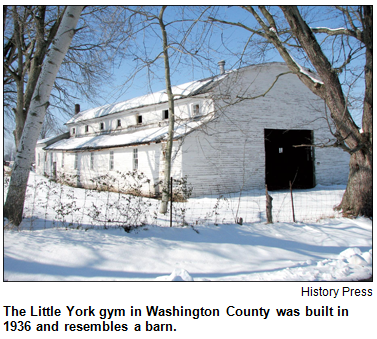 The lavishly illustrated book spotlights 100 former gyms, most dating to an era when every town, no matter how small, had a high school. Kyle not only unearthed the colorful pasts of these "gym gems," he photographed them in their current uses, which include a church (that's in tiny Honeywell in far-northeastern Indiana, where a hoop and basket hang over the pews of the Eden Worship Center) and a flea market (that's in Sidney in southern Indiana).
The lavishly illustrated book spotlights 100 former gyms, most dating to an era when every town, no matter how small, had a high school. Kyle not only unearthed the colorful pasts of these "gym gems," he photographed them in their current uses, which include a church (that's in tiny Honeywell in far-northeastern Indiana, where a hoop and basket hang over the pews of the Eden Worship Center) and a flea market (that's in Sidney in southern Indiana).
To help put all of this in context, Kyle and Nelson will be joined in studio by Chris May, executive director of the Indiana Basketball Hall of Fame in New Castle, who will share insights about how current Hoosier high school gyms stack up against their counterparts across the country.
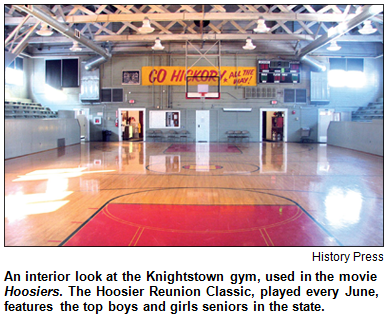 Speaking of New Castle: The city in Henry County, as many Hoosiers know, houses the world's largest high school gym. The New Castle Fieldhouse opened in 1960, seats more than 9,320 and has been dubbed "the cathedral of high school basketball" by USA Today.
Speaking of New Castle: The city in Henry County, as many Hoosiers know, houses the world's largest high school gym. The New Castle Fieldhouse opened in 1960, seats more than 9,320 and has been dubbed "the cathedral of high school basketball" by USA Today.
Did you know, though, that Martinsville once had top honors? Back in 1924 - just a few years before a player named Johnny Wooden would lead the team to glory, resulting in his first wave of fame - Martinsville opened a gym that accommodated more spectators (5,200) than the town's entire population at the time (4,800).
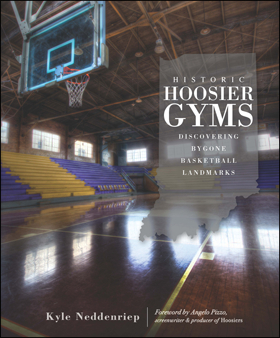 Not only was the Martinsville High School gym larger than Indiana and Purdue University's arenas then, it was featured in the nationally syndicated Ripley's Believe It or Not column.
Not only was the Martinsville High School gym larger than Indiana and Purdue University's arenas then, it was featured in the nationally syndicated Ripley's Believe It or Not column.
The historic gym, which today is part of Martinsville West Middle School (although only the original gym's brick entryway remains), also is featured in Kyle's book. He says he had three parameters for including a community's former basketball gym among the 100 showcased in Historic Hoosier Gyms.
"It could no longer be used as a high school gym. It had to be still standing. And I had to be able to gain access to get inside to take a photo."
 Among those showcased in Historic Hoosier Gyms:
Among those showcased in Historic Hoosier Gyms:
- Peru: For the last 20 years, the historic basketball arena has been owned by the Miami Nation of Indians. The home court of Kyle Macy, 1975's Mr. Indiana Basketball, the former arena for Peru High School is used in various ways, including bingo night three times weekly, by the Miami.
- Chili and Sandusky: In both of these small towns, historic gyms are now private homes. The former Sandusky High School gym was built in 1936 by the WPA (Works Progress Administration), as were many Indiana high school basketball arenas during the era. FYI: Chili, like Peru, is in Miami County; Sandusky is north of Greensburg in Decatur County.
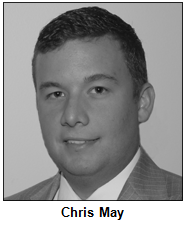 Knightstown: Famous as the home gym of the fictional Hickory Huskers in Hoosiers, the arena built in 1922 is now known as the Historic Hoosier Gym, serves as the setting for family reunions and birthday parties and is, according to Kyle's book, "visited by thousands each year."
Knightstown: Famous as the home gym of the fictional Hickory Huskers in Hoosiers, the arena built in 1922 is now known as the Historic Hoosier Gym, serves as the setting for family reunions and birthday parties and is, according to Kyle's book, "visited by thousands each year."- Greens Fork: It's in this small community in far-eastern Indiana (Wayne County, to be precise) where the historic gym built in 1925 has become a fire station.
As we spotlight high school gyms, we will ask Chris to share folklore about some of the well-known current ones. Second in size only to the New Castle Fieldhouse (which turned into an overnight shelter for a visiting team and spectators when a blizzard roared through during the early 1960s) is the Wigwam in Anderson, which seats more than 8,990. The Wigwam has remained open even though the former Anderson High School, which used to be next to it, closed more than a dozen years ago and subsequently burned.
History Mystery question
Our History Mystery is a carry-over from two weeks ago, when there was no correct answer. The question focuses on one of the best-known Hoosier politicians during World War II.
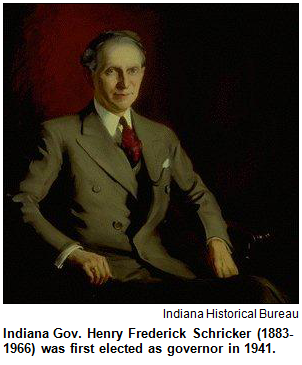 For most of the war, Indiana's popular governor was Henry Schricker, a maverick Democrat from North Judson. Gov. Schricker maintained a high public profile across the state after he was elected in 1941, appearing at war bond rallies on Monument Circle with glamorous movie star Carole Lombard and even running (unsuccessfully) for the U.S. Senate in 1944 while also serving as governor.
For most of the war, Indiana's popular governor was Henry Schricker, a maverick Democrat from North Judson. Gov. Schricker maintained a high public profile across the state after he was elected in 1941, appearing at war bond rallies on Monument Circle with glamorous movie star Carole Lombard and even running (unsuccessfully) for the U.S. Senate in 1944 while also serving as governor.
In his public appearances, including his speeches at war bond rallies, Gov. Schricker invariably wore a distinctive item of apparel that became his trademark.
Question: What article of clothing was identified with Gov. Henry Schricker? Callers during our previous show guessed "top hat," "string tie" and "bowler hat," none of which is the precise answer.
To win the prize, you must call in with the correct answer during the live show. The call-in number is (317) 788-3314, and the prize is a gift card to
Ambrosia Ristorante-Bar and two tickets to the Eiteljorg Museum, courtesy of the Indianapolis Convention and Visitors Association.
Roadtripper
Chris Gahl of the ICVA will call in with a surprise Roadtrip!
Your team on the Hoosier History Live! e-project,
Nelson Price, host and creative director
Molly Head, producer, (317) 927-9101
Chris Gahl, Roadtripper
Richard Sullivan, webmaster and tech director
Pam Fraizer, graphic designer
Garry Chilluffo, creative consultant
www.hoosierhistorylive.org





Please tell our sponsors that you appreciate their support: Coby Palmer Designs, Yats restaurants, Indiana Historical Society, Lucas Oil and Story Inn.
 Acknowledgments to Print Resources, Indianapolis Marion County Public Library, Monomedia, Indiana Humanities Council, Indianapolis Convention & Visitors Association, WICR-FM, Fraizer Designs, Chelsea Niccum and many other individuals and organizations. We are an independently produced program and are self-supporting through organizational sponsorships, grants and through individual tax-deductible contributions through the Indiana Humanities Council. Visit our website to learn how you can support us financially.
Acknowledgments to Print Resources, Indianapolis Marion County Public Library, Monomedia, Indiana Humanities Council, Indianapolis Convention & Visitors Association, WICR-FM, Fraizer Designs, Chelsea Niccum and many other individuals and organizations. We are an independently produced program and are self-supporting through organizational sponsorships, grants and through individual tax-deductible contributions through the Indiana Humanities Council. Visit our website to learn how you can support us financially.
Jan. 8 - encore presentation
Medical treatments of early settlers
To help cure a family member struggling with a disorder, would you serve a delicacy known as fried mice pie? Believe it or not, that was a treatment suggested to pioneers in the Old Northwest Territory, including early Indiana. To find out what disorder the repulsive-sounding pie was supposed to cure, you will have to tune in to the show, which is an encore broadcast of one of our most popular programs from this past year.
 Nelson's studio guest is Hoosier storyteller Sue Grizzell, who has extensively researched medical "treatments" practiced during the late 1700s and early 1800s, often using archives at the Indiana Historical Society.
Nelson's studio guest is Hoosier storyteller Sue Grizzell, who has extensively researched medical "treatments" practiced during the late 1700s and early 1800s, often using archives at the Indiana Historical Society.
In fact, the IHS and Storytelling Arts Indiana commissioned Sue awhile back to put together a presentation she titled "Root Doctors, Midwives and Fried Mice Pie: Medicine in Early Indiana." She has uncovered the story of a so-called "root doctor" who was run out of early Connersville, for example.
According to Sue, many of the bizarre or crude early folk remedies were the result of desperation on the frontier.
"Early Hoosiers only occasionally had access to doctors. ... They mostly lived in isolation, faced economic uncertainty and practiced self-sufficiency as much as possible."
You won't want to miss this fascinating show, during which Sue explains how our ancestors dealt with ailments and terrifying illnesses such as malaria and cholera.
© 2010 Hoosier History Live! All rights reserved.